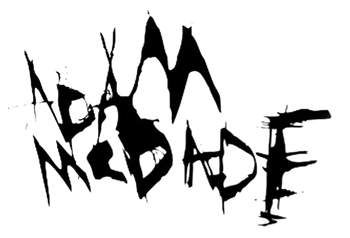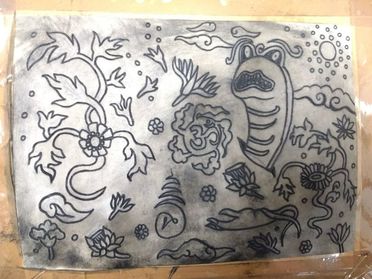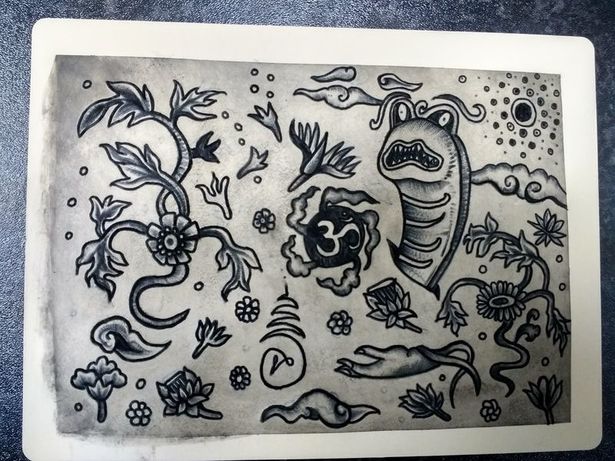Despite the designs being tattooed onto the fake skin not demanding the use of freehand, it was opted over a stencil to gain practice in the technique. The designs drawn where based on Buddhist imagery, that had an aesthetic that i resonated with. Only small designs where created, with the understanding that they may be used as a part of a ‘flash sheet’ (pre-drawn designs) that may be offered as tattoo’s in the early stages of the tattooing career.
Similarly to imagery shown in the previous post, the designs where then lined and shaded. With the designs being small, a large liner made up of 9 needles was chosen to create the shading. This allowed for more precision in the tighter areas of the design. The fake skin was taped onto a piece of MDF board rather than the pound of flesh, in order to investigate the difference in ease of application of the tattoo on a flat, rather than curved surface. This resulted in a vibration from the hard surface, requiring a tighter grip of the machine to reduce distortion in the line. The fake skin appeared to lift away from the board as a result of the heat generated from the tattooing process.
Further practice in whip-shading was then undertaken from the line-work, which simultaneously informed how designs may be executed if taken into actual tattoos in the future.
The task was self-initiated and completed outside of studio opening hours, but within the studio. The purpose was to increase practical understanding, but also to practice tattooing that investigated how personal drawing style may adapt into tattooing practice.
Adam McDade
Apprentice Tattooist and PhD Research Student.




 RSS Feed
RSS Feed
